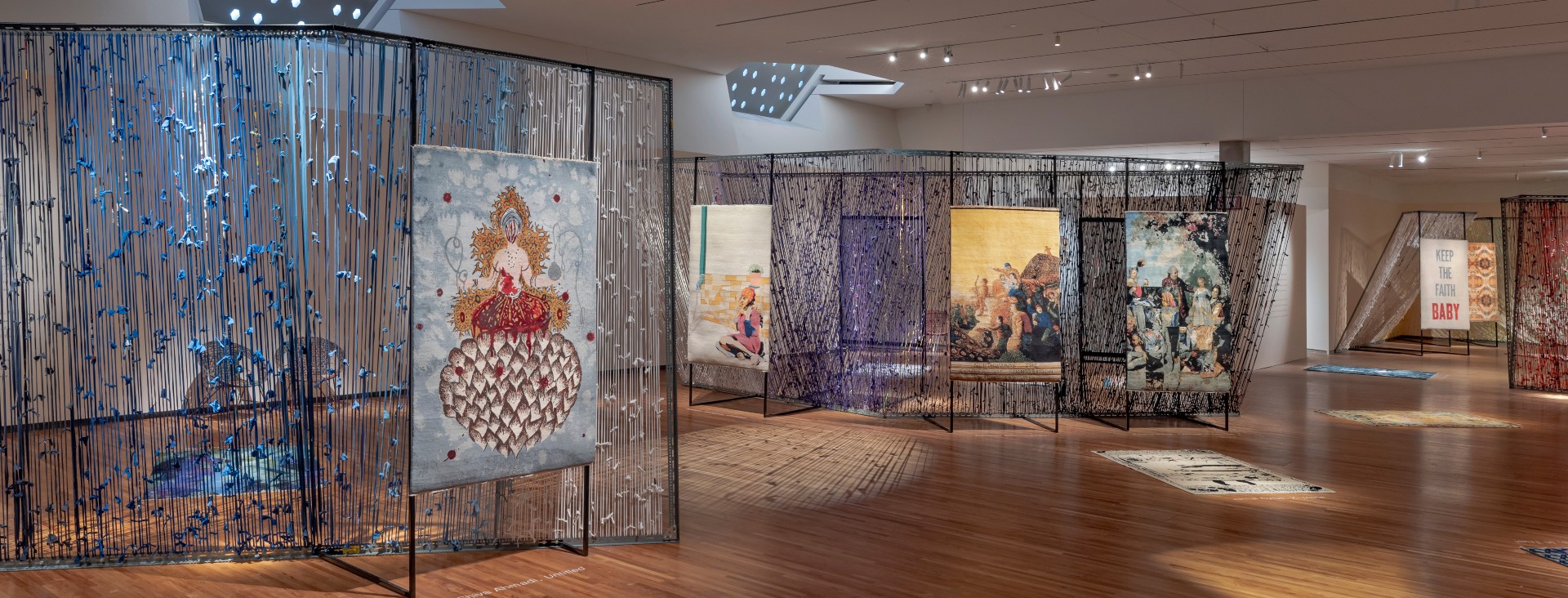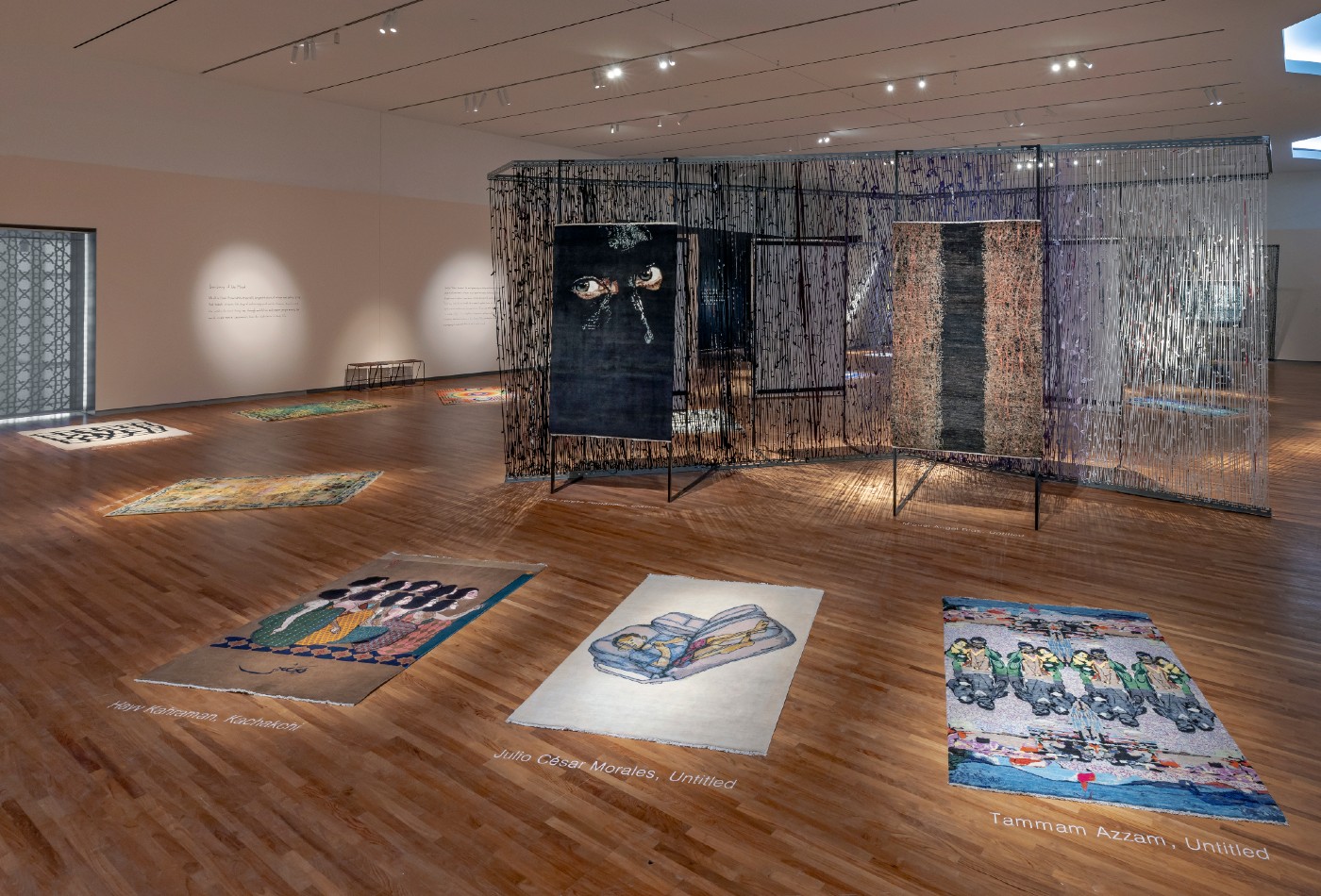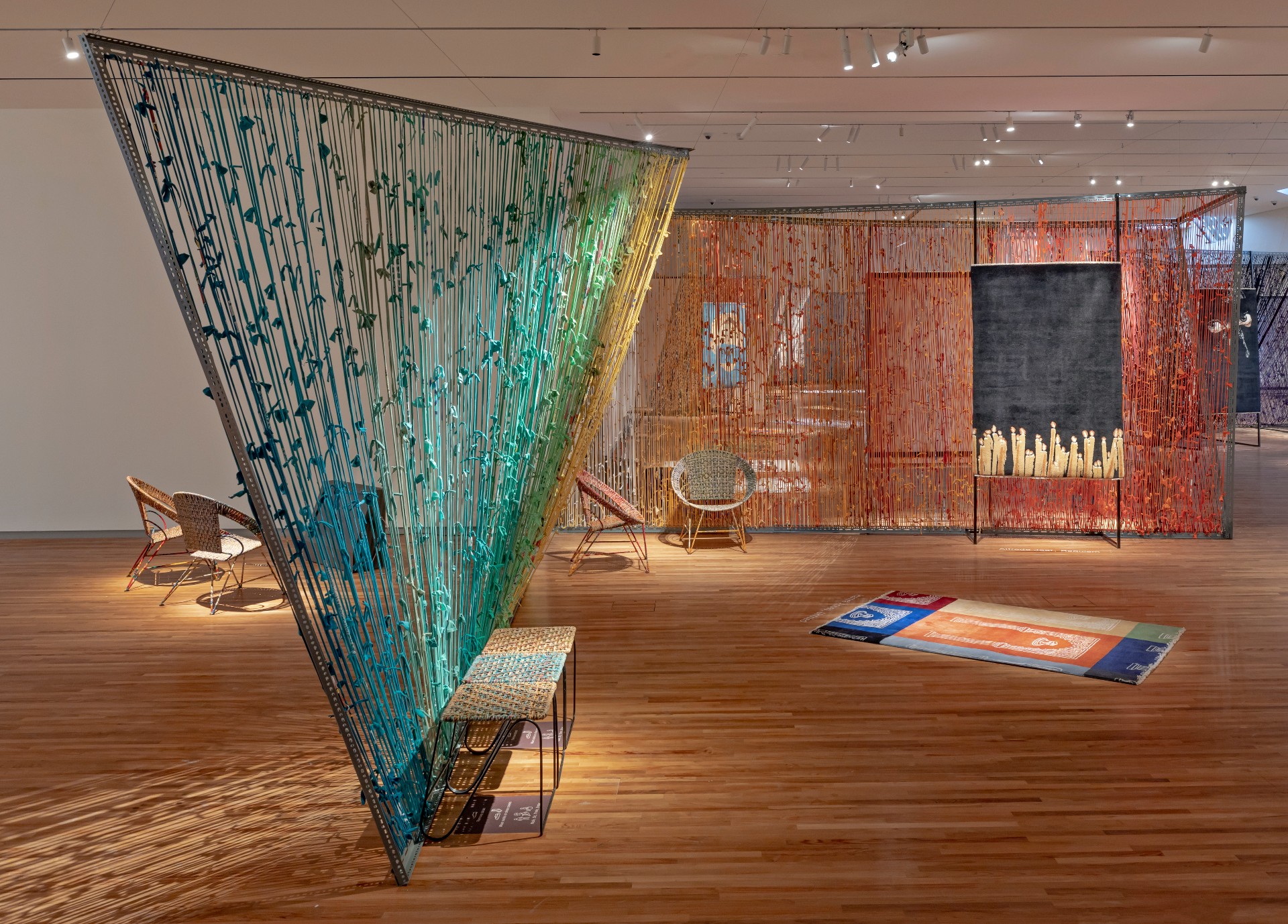
- Programs & Services
- Learning & Development
- Health & Wellness
- Faith & Traditions
- Economic & Financial Planning
- Community Engagement
- Support Services
- News
- Upcoming Events
- Watch Now
- Opportunities
- the.ismaili
- Feedback
- Login

One of the Aga Khan Museum’s latest exhibits features walls made of an unlikely resource: 3,000 used T-shirts. They’ve been gathered from the public and recycled into 12-foot waves of shredded fabric that conjure up images of temporary shelters—a reference to the transient homes of millions worldwide fleeing conflicts, climate change and other problems.
These textile “walls” are part of a bespoke gallery design created for the museum’s Sanctuary exhibition by Dr. Azra Akšamija, an artist and architectural historian at the Massachusetts Institute of Technology. The display aims to highlight the ecological impact of the buy-now-throw-away-later consumer culture—every second, the equivalent of a garbage truck full of textiles is landfilled or burned—while honoring Earth as a sanctuary for all life.
"We live in an age of mass human displacement due to war, poverty, and climate change. We feel a drive at the Aga Khan Museum to call attention to the urgency of these humanitarian and environmental issues," says museum curator Dr. Michael Chagnon, an art historian. "The point is to celebrate what’s best about our humanity even in times of extreme hardship.”

The exhibition, which originated at the FOR-SITE Foundation in San Francisco in 2016 and was first displayed in a chapel, takes visitors through an immersive experience that explores the concept of safe havens with woven rugs designed by 36 artists from around the world, including Mona Hatoum, Brendan Fernandes and Ai Weiwei, who meditated on the word “sanctuary.”
T-shirt “walls” that resemble vertical looms provide the backdrop. Porous and open, they allow for a free flow of ideas and conversations as visitors explore the concept of sanctuary.

Traditionally, gallery exhibition walls are used as space dividers. They are custom-built and repositioned regularly to create a dynamic atmosphere for each new exhibition. However, these “shift walls” are not recyclable, explains Sarah Beam-Borg, senior exhibitions manager at the Aga Khan Museum. Exhibits also involve a lot of graphic material that cannot be reused, she adds.
The design of the Sanctuary exhibition has given the museum an opportunity to try a new method for decreasing exhibition waste and to explore other environmentally friendly approaches to overcome the traditional visual language of exhibitions. Plans to divide exhibition space through lighting are already in the works, while the museum is working with its vendors to select recycled materials with a low environmental impact for shift walls, labels and other elements of exhibitions.
With the Sanctuary exhibition, the Aga Khan’s Museum’s education team plans to bring the items full circle: It will give the T-shirt strands a third life by repurposing them into new items like pencil cases and mats.
This article originally appeared in the Summer 2020 issue of The Ismaili Canada.